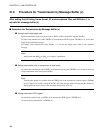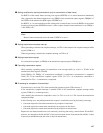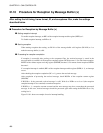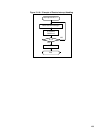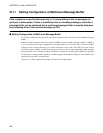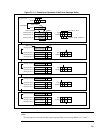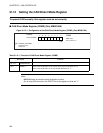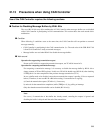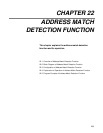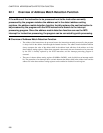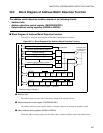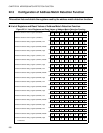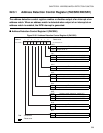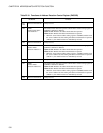
503
21.13 Precautions when Using CAN Controller
Use of the CAN Controller requires the following cautions.
■ Caution for Disabling Message Buffers by BVAL Bits
The use of BVAL bits may affect malfunction of CAN Controller when messages buffers are set disabled
while CAN Controller is participating in CAN communication. This section shows the work around of this
malfunction.
●
Condition
When following 2 conditions occur at the same time, the CAN Controller will not perform to transmit
messages normally.
• CAN Controller is participating in the CAN communication. (i.e. The read value of the CSR: HALT bit
is 0 and CAN Controller is ready to transmit messages)
• Message buffers are read when BVAL bits disable the message buffers.
●
Work around
Operation for suppressing transmission request
Do not use BVAL bit for suppressing transmission request, use TCAN bit instead of it.
Operation for composing transmission message
For composing a transmission message, it is necessary to disable the message buffer by BVAL bit to
change contents of ID and IDE registers. In this case, BVAL bit should reset (BVAL=0) after checking
if TREQ bit is 0 or after completion of the previous message transmission (TC=1).
In case a buffer needs to be disabled, ensure that no transmission request is pending (if it was requested
before). Therefore, do not reset BVALx-Bit before testing, if a transmission is ongoing;
a) Cancel the transmission request (TCANx=1;), if necessary
b) and wait for the transmission completion (while (TREQx==1);) by polling or interrupt.
Only after that the transmission buffer can be disabled (BVALx=0;).
Note:
For case a), if transmission of that buffer has already started, canceling the request is ignored and
disabling the buffer is delayed until the end of the transmission.




